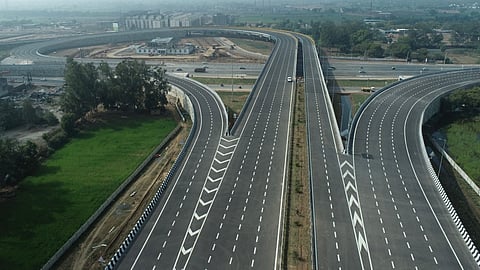Delhi Mumbai Expressway set to open by December 2025; Here's all you need to know:
Ministry of Road Transport and Highways (MoRTH) recently informed Rajya Sabha that construction work on 1,156 km of the 1,386 km Delhi Mumbai Expressway has been completed. The project is set to inaugurate on December 2025. Of this, 756 km is already open to traffic. The project, when fully operational, will be India’s longest expressway, spanning six states and linking the national capital with the country’s financial hub.
Start Point - DND Flyway, Delhi & Sohna, Haryana
End Point - Virar & Jawaharlal Nehru Port Trust, Maharashtra
Connecting six states, redefining connectivity
The expressway passes through Delhi, Haryana, Rajasthan, Madhya Pradesh, Gujarat, and Maharashtra. The whole 1350 km has Delhi Mumbai Expressway has been separated into four sections that include different states, and the route length and alignment for the same is given below:
1. DND-Faridabad-KMP - 59 km
2. Sohna-KMP-Vadodara - 844 km
3. Vadodara-Virar - 354 km
4. Virar-JNPT - 92 km
Once completed, it will cut the Delhi–Mumbai travel time from 24 hours to 12 hours and shorten the current route length by 50% compared to NH-48.
Project progress & delays
Earlier updates from the ministry in July 2024 indicated 82% physical progress with 1,136 km completed. However, five packages covering 140 km between Surat and the Gujarat–Maharashtra border have experienced delays due to contractor issues and land acquisition challenges.
Despite these setbacks, MoRTH confirmed that the government is taking all relevant steps to ensure timely completion.
Scale, cost & design
Estimated at ₹1 lakh crore, the Delhi–Mumbai Expressway is designed as an 8-lane access-controlled highway, expandable to 12 lanes in the future. It has over 2,000 water recharge points and over 94 on-route amenities. With a design speed of 120 kmph, the project aims to deliver high-speed connectivity.
Green features & sustainability
The Delhi–Mumbai Expressway is being developed as a green corridor, integrating sustainable design features. These include:
Tree plantation drives along the route to offset carbon emissions
Solar-powered lighting systems on select stretches
Wildlife crossings and sound barriers to minimise ecological disruption
Economic & tourism impact
Once complete, the expressway will revolutionise logistics and trade between northern and western India. Faster road movement will reduce freight costs, enable quicker delivery of goods, and strengthen industrial corridors across states. The project is also expected to create thousands of jobs, attract new investments, and support regional economic growth in manufacturing, e-commerce, and agriculture sectors.
Further, the expressway will open up new opportunities for road tourism, connecting destinations like Udaipur, Jaipur, Vadodara, and Surat. With reduced travel time, scenic routes and cultural hubs across multiple states will become more accessible than ever.
To get all the latest content, download our mobile application. Available for both iOS & Android devices.

